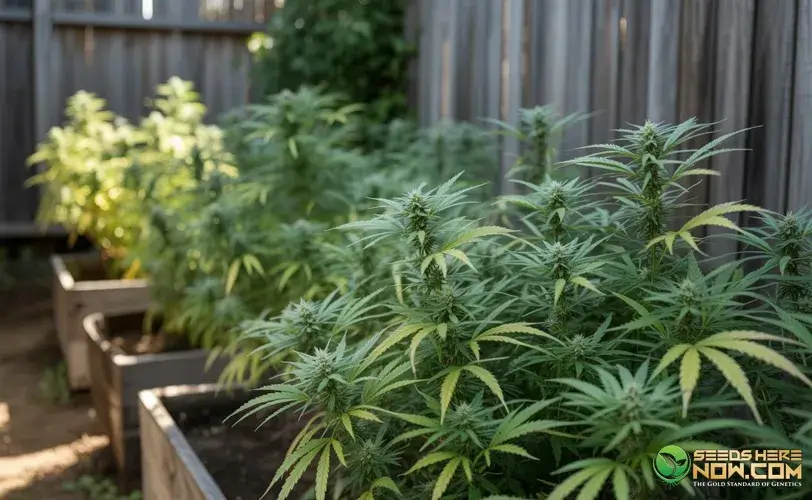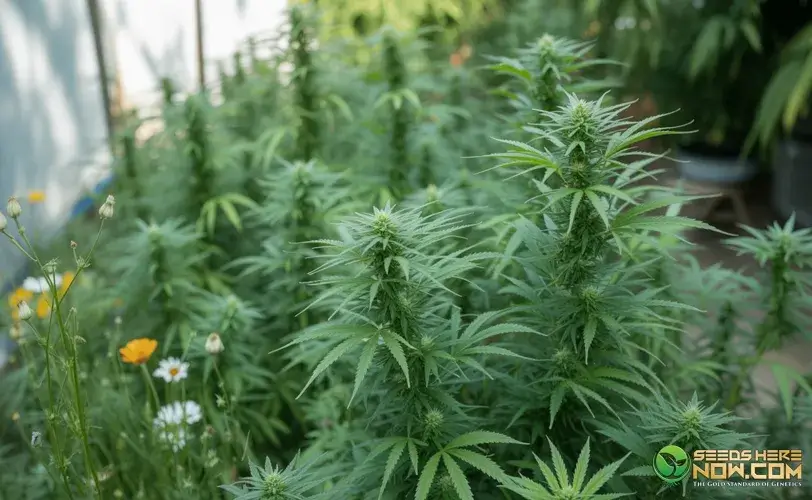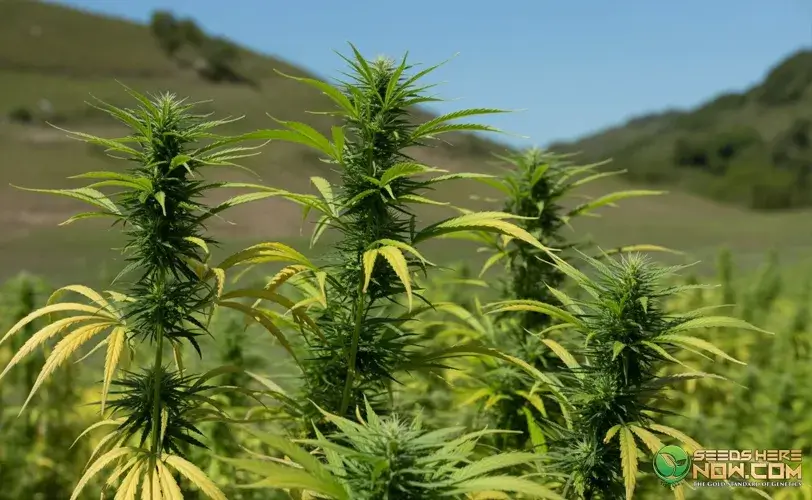How To Grow Feminized Seeds Outdoors: A Complete Guide

Growing cannabis outdoors using feminized seeds can be a rewarding experience. These seeds are specifically bred to produce only female plants, which are the ones responsible for producing the cannabinoid-rich buds growers seek. With proper planning, timing, and care, cultivating feminized seeds outdoors can lead to bountiful harvests of high-quality cannabis.
This comprehensive guide covers everything you need to know about how to grow feminized seeds outdoors, from selecting the right genetics to harvesting and curing your buds.
What Are Feminized Seeds?
Feminized seeds are cannabis seeds that have been genetically modified to produce only female plants. Traditionally, cannabis growers had to identify and remove male plants to prevent pollination, which reduces the quality and potency of the buds. Feminized seeds eliminate this issue, ensuring that nearly every plant in your garden will produce resinous flowers.
By choosing feminized seeds, you simplify the growing process and maximize the use of space, soil, nutrients, and sunlight.
Advantages of Growing Feminized Seeds Outdoors
Growing feminized cannabis seeds outdoors comes with several benefits:
-
Higher Yields: Since all plants are female, all energy goes toward bud production.
-
Efficiency: No time or effort is wasted identifying and removing males.
-
Consistency: Feminized seeds offer more predictable results in terms of phenotype and cannabinoid profiles.
-
Cost-Effective: You save money by using space efficiently and minimizing losses due to male plants.
Outdoor growing, in general, also offers natural sunlight, lower operational costs, and more room for plants to thrive.
Choosing the Right Feminized Seeds
Selecting the right feminized strain for your climate is one of the most critical decisions in outdoor cultivation. Different strains perform better in different environments.
Consider Your Local Climate
-
Cool Climates: Choose fast-flowering, mold-resistant strains like Northern Lights, Early Skunk, or Blueberry.
-
Warm, Dry Climates: Sativas like Super Silver Haze or Amnesia Haze can flourish.
-
Humid Climates: Look for mold-resistant strains such as Durban Poison or Frisian Dew.
Research breeders that specialize in outdoor strains. Seeds Here Now offers a wide range of feminized seeds from trusted breeders like Humboldt Seed Co., Exotic Genetix, and DNA Genetics.
Photoperiod vs. Autoflower Feminized Seeds
-
Photoperiod Feminized Seeds: Depend on changes in light cycles to begin flowering. Best suited for traditional outdoor grows.
-
Autoflower Feminized Seeds: Begin flowering based on age, not light exposure. Ideal for growers in areas with short seasons.
Photoperiod feminized seeds generally yield more and produce higher-quality buds, but autoflowers are easier for beginners and those with short summers.
When To Start Growing Outdoors
If you want to grow feminized seeds outdoors, you must understand how to time your harvest. The key is to avoid frost and provide enough time for the plant to complete its lifecycle.
-
Germinate Indoors: Start seeds 2 to 4 weeks before your local last frost date.
-
Transplant Outdoors: Once nighttime temperatures consistently stay above 50°F (10°C), it’s safe to move your seedlings outdoors.
In most regions of the Northern Hemisphere, outdoor planting happens between late April and early June, with harvest occurring from September to October.
How To Germinate Feminized Seeds
Germinating your seeds correctly sets the stage for a healthy plant.
Paper Towel Method
-
Moisten a paper towel with distilled water.
-
Place seeds on the towel, then fold it over them.
-
Put the towel in a plastic bag or between two plates.
-
Keep in a dark, warm area (70°F to 80°F).
-
Check daily for sprouts. Seeds usually germinate in 24 to 72 hours.
Once the taproot appears, carefully transfer the seed to a seedling starter pot or directly into the ground if temperatures are appropriate.
Preparing the Outdoor Grow Site
Location and soil quality significantly influence plant health and yield.
Site Selection
-
Sunlight: Choose a spot that receives at least 8 hours of direct sunlight per day.
-
Drainage: Avoid low spots where water can pool. Cannabis roots dislike “wet feet.”
-
Wind Protection: Use fencing, companion planting, or natural terrain to block harsh winds.
-
Privacy: Consider neighbors and local laws. Use tall fencing or camouflage techniques.
Soil Preparation
Natural soil often requires amendment for optimal cannabis growth.
-
Ideal Soil Type: Loamy, well-draining, nutrient-rich.
-
pH Range: 6.0 to 7.0.
-
Amendments: Use compost, worm castings, bat guano, bone meal, and perlite.
You can also use pre-mixed organic soils designed for cannabis, or dig large holes and fill them with high-quality soil blends.
Transplanting and Vegetative Growth
Once the seedlings have grown a few sets of true leaves and outdoor temperatures are stable, transplant them into their final location.
Tips for Transplanting
-
Harden off plants by gradually exposing them to outdoor conditions over 7 to 10 days.
-
Water thoroughly before and after transplanting.
-
Handle gently to avoid root damage.
During the vegetative phase, the plants will focus on building size and structure. Provide nitrogen-rich fertilizers or organic amendments to support vigorous growth.
Training Techniques for Outdoor Plants
Training can improve yield, shape the plant for better light exposure, and manage height.
Common Techniques
-
Topping: Cut the main stem to encourage branching and bushier growth.
-
LST (Low-Stress Training): Bend and tie down branches to create a flat canopy.
-
Supercropping: Gently crush stems to redirect growth and strengthen structure.
-
SCROG (Screen of Green): Use a mesh or net to spread branches horizontally.
Training should be done early in the vegetative stage and stopped once the plant starts to flower.
Watering and Nutrients
Cannabis plants need regular watering, but overwatering is a common mistake.
Watering Guidelines
-
Check Soil: Insert a finger or moisture meter. Water when the top inch is dry.
-
Early Season: Water every 2 to 4 days.
-
Peak Season: Large plants may need daily watering, especially in hot weather.
-
Mulching: Use straw, wood chips, or living mulch to retain moisture and regulate temperature.
Nutrient Needs
Cannabis requires different nutrients during each stage of growth.
-
Vegetative Stage: High nitrogen (N), moderate phosphorus (P), and potassium (K).
-
Flowering Stage: Lower nitrogen, higher phosphorus and potassium.
Use organic fertilizers, compost teas, or bottled nutrients specifically designed for cannabis. Always follow dosage instructions and monitor for nutrient deficiencies or toxicities.
Pest and Disease Management
Outdoor grows are vulnerable to pests, mold, and other environmental threats.
Common Pests
-
Aphids
-
Spider mites
-
Caterpillars
-
Whiteflies
Organic Control Methods
-
Neem Oil: Effective against insects and powdery mildew.
-
Beneficial Insects: Ladybugs, predatory mites, and lacewings can control pests naturally.
-
Insecticidal Soaps: Safe and effective for minor infestations.
Mold Prevention
-
Airflow: Prune excess leaves and space plants properly.
-
Avoid Overwatering: Ensure proper drainage.
-
Harvest Promptly: Bud rot is common in late-flowering strains exposed to moisture.
Flowering Stage
As daylight hours decrease in late summer, feminized photoperiod plants will enter the flowering stage.
Key Considerations
-
Stop all training and high-nitrogen feeding.
-
Switch to bloom nutrients high in phosphorus and potassium.
-
Monitor closely for signs of pests, mold, and nutrient deficiencies.
Buds will develop over 8 to 12 weeks, depending on the strain. Trichome color and pistil development indicate harvest readiness.
Harvesting Feminized Outdoor Plants
Knowing when and how to harvest is crucial for maximizing potency and flavor.
Signs of Readiness
-
Trichomes: Use a magnifier. Milky white with some amber indicates peak THC.
-
Pistils: 70% to 90% of the hairs have darkened and curled inward.
-
Aroma: Strong and pungent with a fully developed terpene profile.
Harvest Tips
-
Harvest in the early morning or after a cool night.
-
Use clean, sharp shears.
-
Hang plants upside down in a dark, ventilated space for drying.
Drying and Curing
Proper drying and curing preserve flavor, potency, and smoothness.
Drying
-
Hang branches or place buds on drying racks.
-
Maintain 60°F to 70°F and 50% to 60% humidity.
-
Dry for 7 to 14 days until stems snap cleanly.
Curing
-
Place dried buds in glass jars filled 70% to 80%.
-
Store in a cool, dark place.
-
Open jars daily for the first two weeks (burping), then once every few days.
-
Cure for at least two weeks; some connoisseurs cure for 6 to 8 weeks or longer.
Curing enhances the aroma, reduces harshness, and allows cannabinoids and terpenes to mature.
Legal Considerations
If you’d like to grow feminized seeds outdoors, you’ll need to familiarize yourself with local and state laws. Some jurisdictions allow outdoor cultivation for personal or medical use, while others strictly prohibit it. Even in legal states, there may be limits on plant count, fencing requirements, and visibility.
Stay compliant to avoid fines or legal issues. Always keep your garden discreet and secure.
Final Thoughts on How To Grow Feminized Seeds Outdoors
Growing feminized seeds outdoors is an efficient and rewarding way to cultivate cannabis. With proper strain selection, site preparation, and care throughout the growing cycle, you can achieve abundant yields of top-shelf flower without the need for artificial lighting or complicated equipment.
Whether you’re a beginner or a seasoned grower, knowing how to grow feminized seeds outdoors simplifies the cultivation process and maximizes your chances of success. From seed to harvest, each step offers an opportunity to connect with nature and deepen your understanding of the plant.
By following the techniques and best practices outlined in this guide, you will be well on your way to producing potent, fragrant, and beautiful buds in your own backyard.
Suggested Articles
;)
;)
;)






 04 Sep 2025
04 Sep 2025  3 min read
3 min read


 April 10, 2024
April 10, 2024 


RESPONSES (0)
No responses yet. Be the first to respond!